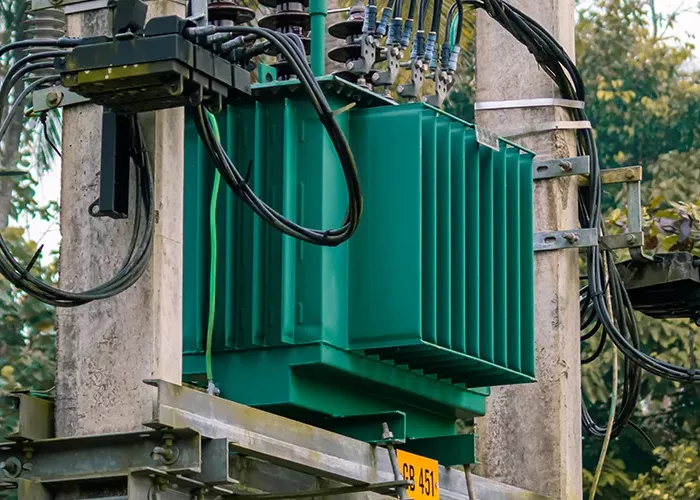Pressure measurement is a critical aspect of various industries, including manufacturing, automotive, aerospace, and process control. Among the different types of pressure measurement devices, electric pressure gauges are widely used due to their accuracy, reliability, and ease of integration with digital monitoring systems. These gauges convert pressure into an electrical signal, which can then be displayed, recorded, or used for automated control.
This article explores the working principles, components, types, and applications of electric pressure gauges, providing a comprehensive understanding of their functionality.
Working Principle of an Electric Pressure Gauge
An electric pressure gauge operates by converting mechanical pressure into an electrical signal. The fundamental process involves three primary stages:
Pressure Sensing: A sensing element detects the applied pressure and deforms accordingly.
Signal Conversion: The mechanical deformation is converted into an electrical signal, usually using strain gauges, piezoelectric sensors, or capacitive elements.
Signal Processing and Display: The electrical signal is processed, amplified, and transmitted to a display unit or monitoring system.
Pressure Sensing Elements
The sensing element is a crucial part of an electric pressure gauge. Various types of sensing elements are used depending on the application and required sensitivity:
Bourdon Tube: A curved, hollow tube that straightens under pressure and is linked to an electrical transducer.
Diaphragm: A thin, flexible membrane that deflects under pressure variations.
Bellows: A flexible, accordion-like structure that expands and contracts with pressure changes.
Piezoelectric Sensors: Crystals that generate an electric charge in response to mechanical stress.
Capacitive Sensors: Use changes in capacitance between two plates to measure pressure variations.
Signal Conversion
Once the sensing element detects pressure changes, the information needs to be converted into an electrical signal. This conversion is achieved through one of the following methods:
Strain Gauges: Small resistive elements that change resistance when stretched or compressed. These are often part of a Wheatstone bridge circuit to detect minute resistance changes.
Piezoelectric Effect: Certain materials generate an electrical charge when subjected to mechanical force.
Capacitive Measurement: Pressure changes alter the distance between capacitor plates, varying capacitance, which is converted into an electrical signal.
Inductive and Magnetic Sensors: Use magnetic field variations to detect diaphragm or bellow movements and generate an electrical signal.
Signal Processing and Display
Once converted, the electrical signal is amplified and processed by electronic circuits. The processed signal can be:
- Displayed on a digital screen as pressure readings.
- Transmitted to a data logging system for record-keeping.
- Sent to a programmable logic controller (PLC) for automated process adjustments.
- Used in safety systems for alerts and shutdowns in case of overpressure conditions.
Types of Electric Pressure Gauges
Electric pressure gauges come in different types, each suited for specific applications:
Resistive Pressure Gauges: Utilize strain gauges and a Wheatstone bridge circuit for accurate measurements. Common in industrial and laboratory applications.
Capacitive Pressure Gauges: Measure changes in capacitance due to diaphragm movement. Often used in medical and high-precision applications.
Piezoelectric Pressure Gauges: Suitable for dynamic pressure measurement in automotive, aerospace, and impact testing applications.
Inductive and Hall Effect Pressure Gauges: Use magnetic fields for non-contact pressure measurements in harsh environments.
Smart Digital Pressure Gauges: Equipped with microprocessors, these gauges offer wireless connectivity, data logging, and advanced analytics.
Applications of Electric Pressure Gauges
Electric pressure gauges find applications across multiple industries:
Automotive Industry: Used in fuel injection systems, tire pressure monitoring, and engine performance analysis.
Aerospace Industry: Measure hydraulic pressure, cabin pressure, and fuel system pressure.
Industrial Manufacturing: Monitor hydraulic and pneumatic system pressures to ensure optimal operation.
Oil and Gas Industry: Used in wellhead monitoring, pipeline pressure measurement, and safety systems.
Medical Devices: Measure blood pressure, respiratory pressures, and fluid flow in medical equipment.
Environmental Monitoring: Used in weather stations and pollution control systems to measure atmospheric pressure.
Advantages of Electric Pressure Gauges
Compared to mechanical pressure gauges, electric pressure gauges offer several advantages:
High Accuracy: Capable of measuring minute pressure changes with great precision.
Remote Monitoring: Can transmit data to control systems for real-time monitoring.
Automation Integration: Easily integrated with industrial automation and IoT systems.
Durability and Reliability: Withstand harsh environments and require less maintenance.
Multiple Output Options: Provide analog or digital output signals for various applications.
Conclusion
Electric pressure gauges play a vital role in modern industry by providing accurate and reliable pressure measurements. Their ability to convert pressure into an electrical signal makes them ideal for automation, monitoring, and safety applications. By understanding their working principles, types, and advantages, industries can effectively utilize these instruments to enhance efficiency, productivity, and safety. Whether in automotive, aerospace, medical, or industrial applications, electric pressure gauges remain an indispensable tool in pressure measurement and control.

